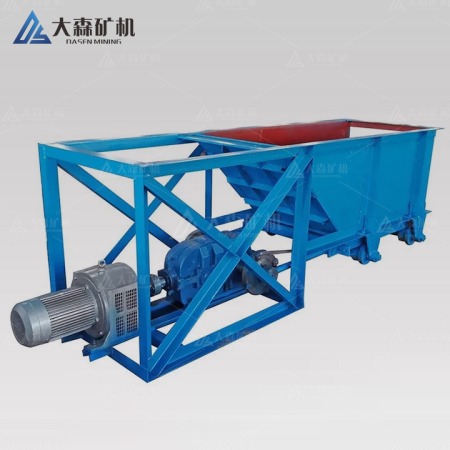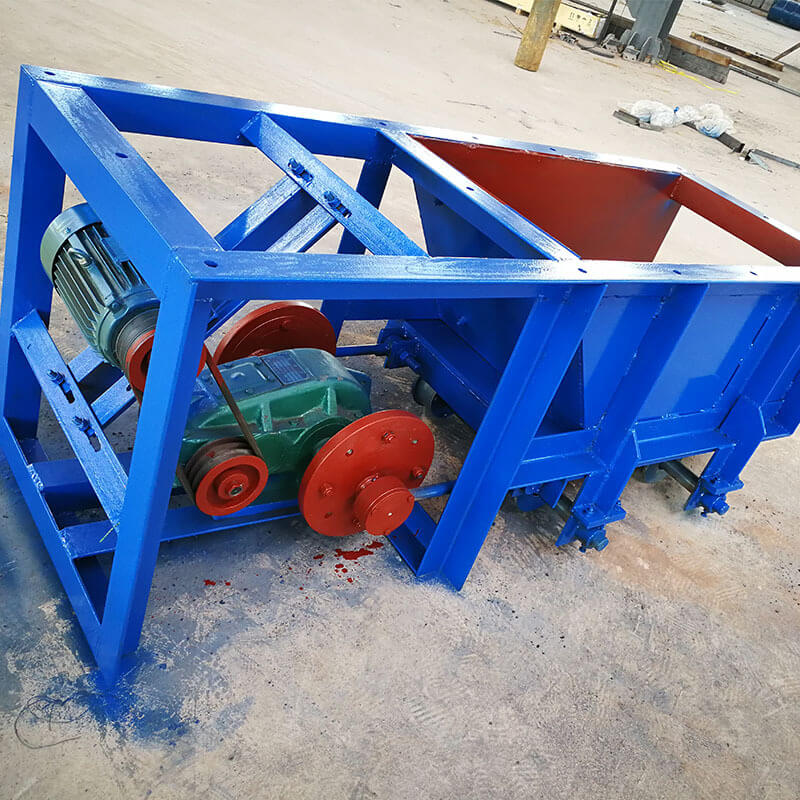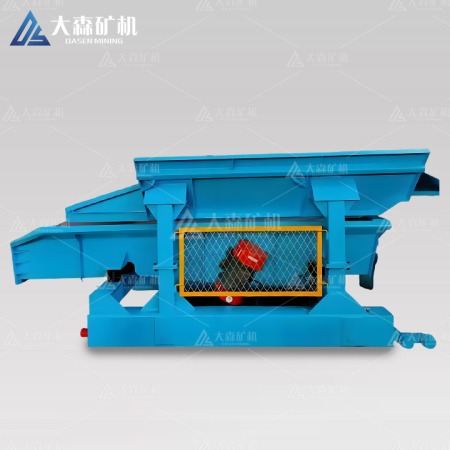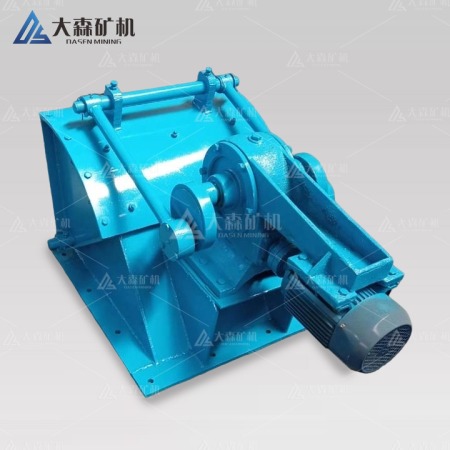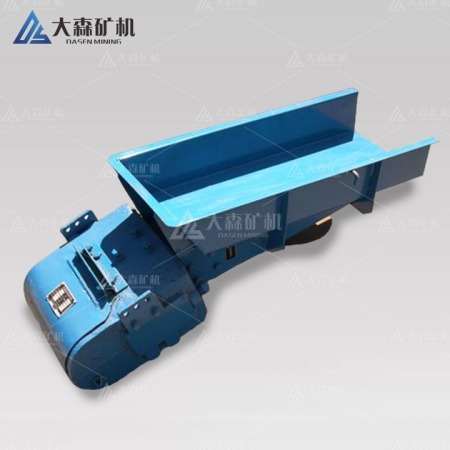Description
Name: feeder, do chute feeders, Chute Feeder,
Feed port size: 980mm
Weight: 1700kg
Production capacity: 10-90t / h
Application site:A uniform and continuous feed from silos to crushing, transportation, and other machinery is widely used in mining, processing plants, chemical industries, cement, and building materials departments.
Trough chute feeders are essential equipment used in the discharge process of ore storage tanks. Also known as reciprocating or swing feeders, these devices feature a unique structure that varies by model. A common characteristic is the adjustable ram controlling the material layer’s height. The feeder’s lower section houses a conveying chute equipped with a reciprocating feed plate. The angle of this feed plate is adjustable, typically ranging from a 5-degree downward slope in the discharge direction to a horizontal position, always less steep than the material’s natural angle of repose. The feed plate’s motion, which can be reciprocating, shaking, or swinging, is driven by a crank rotary mechanism.
Structure of a Trough Chute Feeder
A trough chute feeder is composed of several key components:
- Sector regulating ram: This component plays a crucial role in controlling the flow of material by adjusting the height of the material layer within the feeder.
- Conveying trough plate: This plate serves as the primary channel through which the material is transported.
- Feed plate: The feed plate, attached to the conveying trough plate, undergoes a reciprocating motion to regulate the feeding rate of the material.
- Rollers: Rollers provide support for the conveying trough plate and facilitate its smooth movement.
- Crank connecting rod: This mechanical linkage converts the rotary motion of the drive shaft into the linear reciprocating motion of the feed plate.
- Transmission: The transmission system, including the drive motor and gearbox, provides the necessary power to drive the feed plate.
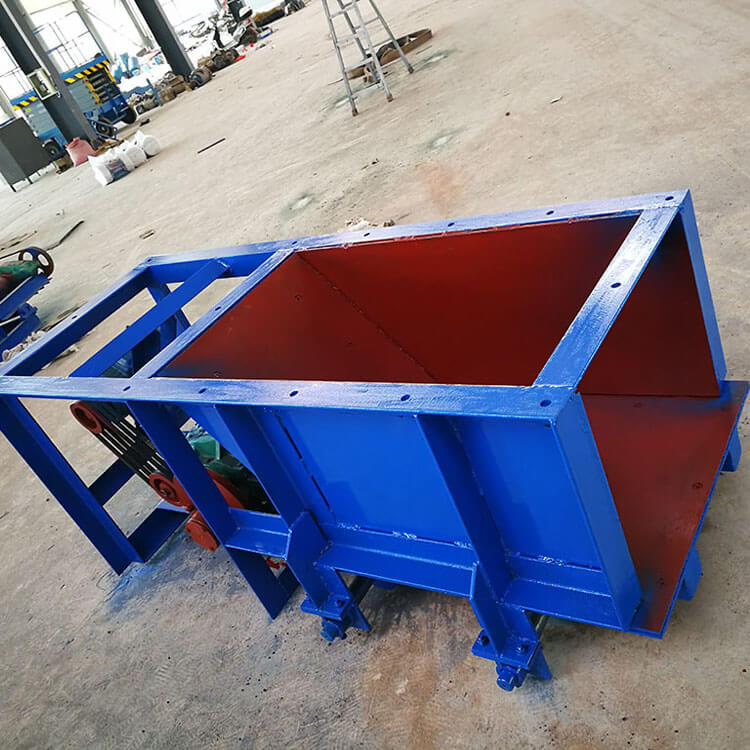
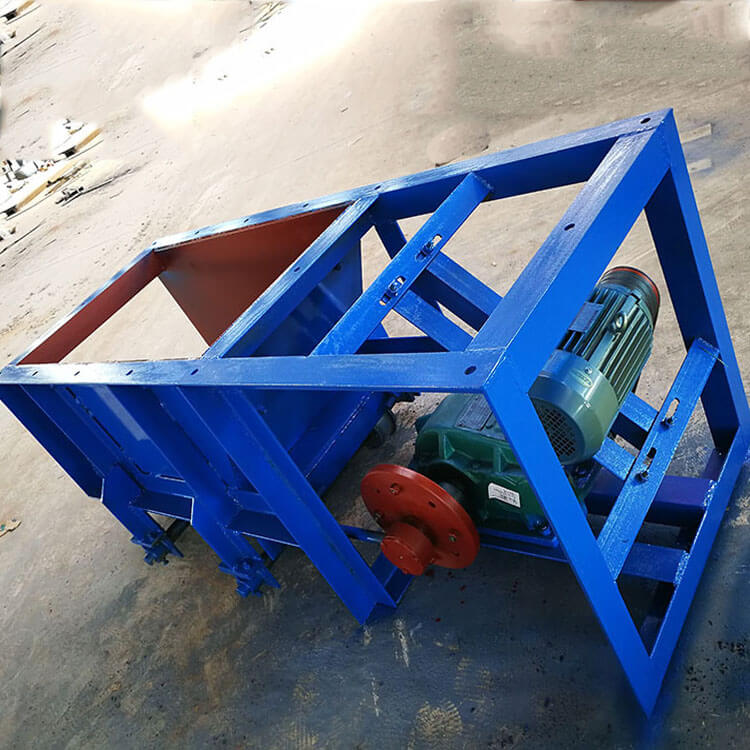
Chute Feeder Working Principle
A chute feeder comprises key components including a motor, reducer, coupling, eccentric mechanism, leakage plate, slot frame, and rollers. Typically positioned at the silo’s lower discharge point, ore accumulates on a leakage plate at the tank bottom. Mounted on rollers, this leakage plate connects to a double-output shaft reducer via an eccentric mechanism, ultimately linking to the motor through a coupling. The motor drives the reducer, inducing a linear reciprocating motion of the eccentric disc and leakage plate within the slot frame. This action ensures uniform material feeding.
The feeder’s bottom plate oscillates 20-60 times per minute with a stroke ranging from 20-200mm. Stroke adjustment is achieved by modifying the eccentric wheel, where eccentricity equals half the stroke. For viscous ores, practical experience suggests a minimum eccentricity of 30mm. The chute width should ideally be 2-2.5 times the feed particle size. Capable of handling iron ore with particle sizes under 500mm, a 980 x 1240 chute feeder is suitable for feeding a 400 x 600 jaw crusher when processing particles between 350-0mm.
| Model | Outlet dimension(mm) | Max feeding size(mm) | Feed capacity(t/h) | Motor model | Motor power(kw) | Weight(kg) |
| DME600*500 | 600*500 | 200 | 10-50 | Y112M-4 | 4 | 1045 |
| DME700*500 | 700*500 | 250 | 10-60 | Y112M-4 | 4 | 1100 |
| DME1240*500 | 1240*500 | 350 | 36-90 | Y160M-6 | 7.5 | 1710 |
Benefits of Using a Chute Feeder
- Flexible installation: Chute feeders offer the flexibility of being installed either on the ground or directly above the ore bin.
- Precise control and easy operation: The feeding rate of a chute feeder can be easily adjusted, making it convenient to operate.
- Space-saving design: The compact design of a chute feeder reduces the overall footprint of the equipment and lowers installation costs.
We can provide you with more information about Gold Ore Plant Solution. If you have any questions, please contact:
Whatsapp:+86 133 1927 7356
Email:[email protected]

